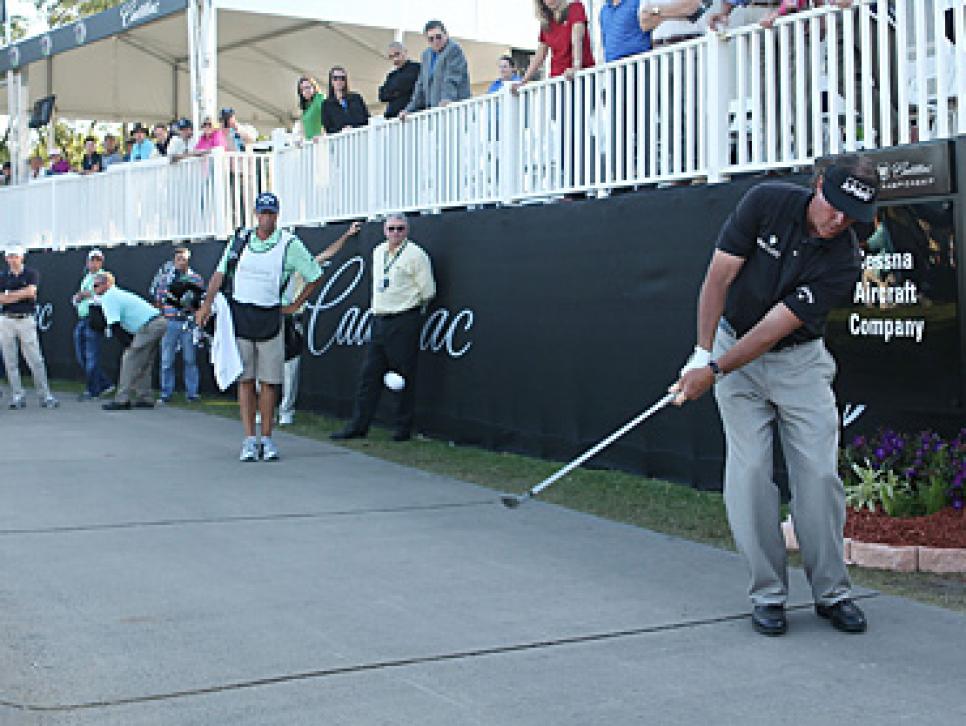News
Why Phil Mickelson's cartpath shot worked so well
On Thursday of the WGC-Cadillac Championship, Phil Mickelson hit a tee shot on the 17th hole at TPC Blue Monster at Trump Doral that came to rest on a cartpath 30 yards from the green, 50 yards from the hole. After weighing whether to take a drop, Lefty opted for the choice most knew he would.
Play it as it lies.

Photo by Getty Images
The move proved wise, as Mickelson clipped the ball off the paved surface with his Callaway X Forged 60-degree wedge and saw it trickle to nine feet from the hole, leading to birdie. Afterward, during an interview on Golf Channel, Mickelson explained the shot with characteristic swagger.
"It's a very easy shot," said Mickelson. "You'd have to be an idiot to open the clubface. You're adding bounce, and there is no way you're going to get the club under the ball. So I square up the face, and then the ball is going to come out five yards longer than normal, and the reason is at impact the club normally, in grass, is working down, but there is no way that is going to happen on the cartpath. ... Because of that the ball tends to pop up in the air quicker. ... I hit the path first, so the club actually worked up at impact, and that's why the ball popped up and went five yards farther."
OK, got all that?
Over the years Mickelson has offered explanations that sometimes raise an eyebrow or two. But in this instance his account of the shot makes perfect sense.
"Compared to a shot from grass, one off a cartpath will have a slightly lower impact location on the face as well as a slightly more level angle of attack," said Dr. Alan Hocknell, Callaway's senior VP of research and development. "The lower impact location is partly responsible for the added ball speed, and there will be less spin and a higher launch if the angle of attack is flatter." In other words, Mickelson's shot had the characteristics of a good tee shot -- high launch and low spin -- because the club was traveling on a horizontal path at impact instead of a downward path.
Mickelson's assertion it was an easier shot because he had green to work with also rang true. Because the shot had less spin, it was going to run out after it landed. If there had been less green to work with, it would have been difficult for Mickelson to get the shot close.
Mickelson's reasoning for squaring the clubface also was sound. Those familiar with the concept of bounce know that, as a general rule, lush or wet courses require wedges with more bounce while less bounce is desirable for those playing on firm terrain, the reason being that bounce elevates the leading edge of the club when it impacts the turf. When conditions are firm -- and you can't get much firmer than a cartpath -- too much bounce can lead to the club skipping off the ground with the leading edge striking the ball higher than desired, resulting in a thin or skulled shot. In some ways Mickelson was simply applying the theory many players use at the Masters and British Open, when they change to wedges with less bounce because of the firm conditions.
At the conclusion of his Golf Channel interview, Mickelson was asked if he honestly thought an amateur could play the same shot.
"Well now that they know how to do it, absolutely," said Mickelson.
Now you know why it works too.